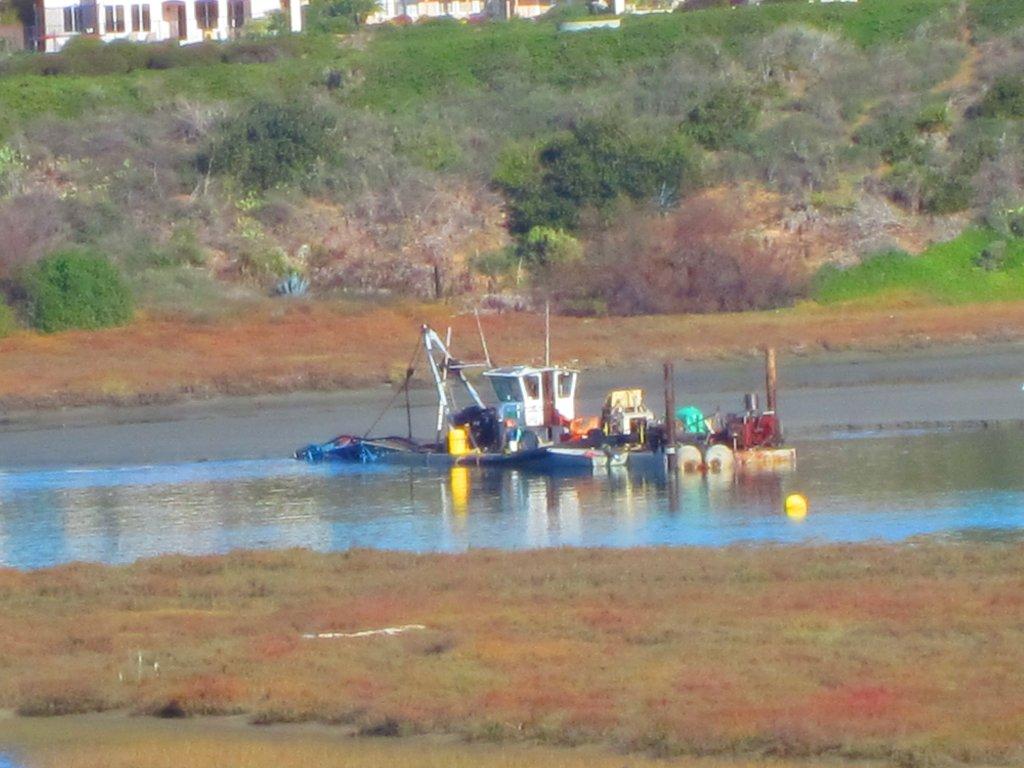
Dredging plays a crucial role in maintaining and developing waterways, ports, harbors, and environmental habitats. From deepening navigation channels to restoring wetlands or managing stormwater, different dredging techniques suit different project demands. Among the most widely used methods are hydraulic, clamshell, and dragline dredging. Each approach offers unique advantages depending on site conditions, material type, environmental concerns, and project goals.
Here’s a breakdown of six essential factors that distinguish these three dredging techniques.
Method and Equipment
Hydraulic dredging uses a pipeline system and centrifugal pumps to move a slurry of water and sediment from the excavation site to a disposal location. It’s ideal for high-volume, continuous material removal, particularly soft sediments like silt, mud, or sand.
Clamshell dredging relies on a crane or excavator equipped with a bucket that lowers into the water to scoop up material. It’s especially effective for excavating compacted soils, gravel, or debris in deeper or hard-to-reach locations.
Dragline dredging employs a long boom and wire rope system with a bucket that drags material toward the shore. Though less common today, it’s well-suited for shallow water and projects with limited access, like ponds or canals.
Project Efficiency and Output
Hydraulic dredging excels in productivity when continuous material removal is necessary over a large area. Because it pumps material directly to disposal or dewatering sites, it minimizes interruptions and supports sustained operations.
Clamshell dredging operates in cycles, lifting sediment one bucket at a time. While this reduces output compared to hydraulic systems, it allows for greater control in confined spaces or near existing structures.
Dragline dredging typically has the slowest output and limited precision, but can cover wider reaches from shore-based positions. This makes it useful in situations where floating equipment is impractical.
Environmental Impact
Hydraulic dredging often causes more turbidity, or sediment suspension in the water, which can affect aquatic ecosystems. However, newer technology allows for tighter control and environmental compliance in sensitive habitats.
Clamshell dredging generates less turbidity due to its grab-and-lift mechanism, making it favorable for projects requiring water quality control.
Dragline dredging generally creates more disturbance at the bottom and along shorelines, so it’s better suited for non-ecologically sensitive areas.
Site Conditions and Material Type
Hydraulic dredging performs best in deeper water with loose or semi-loose material. It’s less effective when dealing with dense clay, debris, or rocky beds.
Clamshell dredging handles a broader range of materials, from soft mud to gravel and compacted sediment. It can also be used in deeper water thanks to extended crane booms.
Dragline dredging is ideal for shallow areas and cohesive soils but struggles with deeper water or loose, flowing materials that are hard to pull toward shore.
Disposal and Dewatering Options
Hydraulic systems pump material as slurry directly to upland disposal sites, making them efficient for long-distance transfer and material drying. They also work well when paired with dewatering systems or treatment areas.
Clamshell dredging collects material in scows or barges for transport and eventual offloading. This allows for selective disposal but adds time and coordination to the project.
Dragline systems usually deposit material near the dredging site, requiring additional handling to move or dry it elsewhere.
Safety and Operational Flexibility
Hydraulic dredging typically requires a more complex setup and constant monitoring, but keeps operators safely on barges or remote systems.
Clamshell dredging offers operational flexibility and is often mounted on crane barges or land-based platforms. Crews can adjust placement and reach with minimal repositioning.
Dragline systems need ample working room onshore and more manual control, which may pose additional safety risks or limitations in developed areas.
Need expert advice on which dredging method fits your next project? At Marathon Construction Corporation, we specialize in all major dredging techniques—including hydraulic, clamshell, and dragline. Contact us today to discuss your goals and get started with a customized plan.

